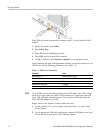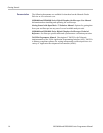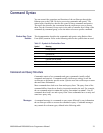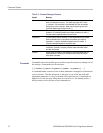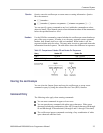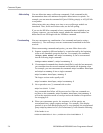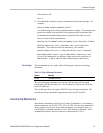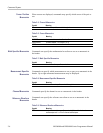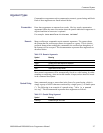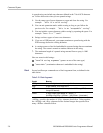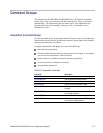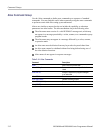
Command Syntax
If the header is
off:
FULL;1
5. Set commands and queries may be concatenated in the same message. For
example,
ACQuire:MODe SAMple;NUMAVg?;STATE?
is a valid message that sets the acquisition mode to sample. The message then
queries the number of a cquisitions for averaging and the acquisition state.
Concatenated commands and queries are executed in the order received.
Here are s ome invalid concatenations:
DISPlay:STYle:NORMal;ACQui re:NUMAVg 8 (no colon before ACQuire)
DISPlay:GRAticule FULL;:DOTSONLY OFF (extra colon before
DOTSonly. You could u se DISPlay:DOTsonly OFF instead)
DISPlay:GRAticule FULL;:*TRG (colon before a star (*) command)
MATH:HORizontal:SCAle 1.0e-1;HORizontal:POSition 5.0el
(levels of the mnemonics are different; either remove the s econd use of
HORizontal: or place :MATH in front of HORizontal:POSition)
Terminating
This documentation uses <EOM> (End of Message) to represent a message
terminator.
Table 2-4: End of Message Terminator
Symbol Meaning
<EOM>
Message terminator
Th
e end-of-message terminator must be the END message (EOI asserted
concurrently with the last data byte). The last data byte may be an ASCII line
feed (LF) character.
This oscilloscope does not support ASCII LF only message termination. The
oscilloscope always terminates outgoing messages with LF and EOI.
Constructed Mnemonics
Some header mnemonics specify one of a range of mnemonics. For example, a
channel mnemonic can be CH1, CH2, CH3, or CH4. You use these mnemonics
in the command just as you do any other mnemonic. For example, there is a
CH1:POSition command, and there is also a CH2:POSition command. In the
command descriptions, this list of choices is abbreviated as CH<x>.
MSO4000 and DPO4000 Series Programmer Manual 2-5




